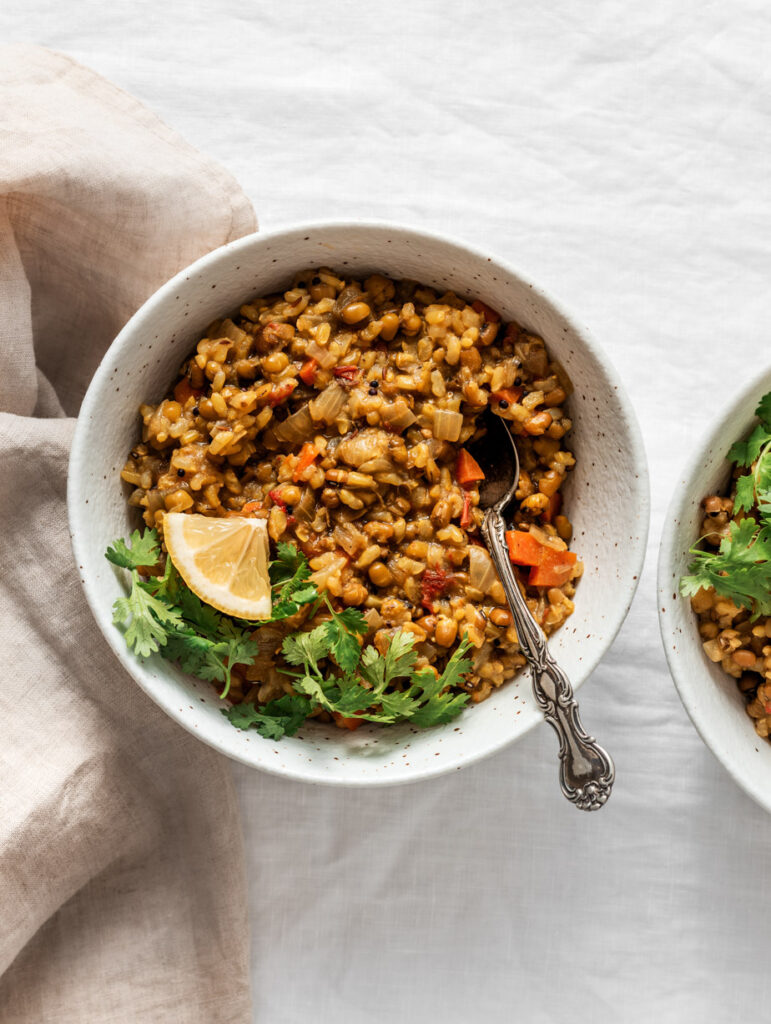
About This Easy Kitchari
Kitchari (also called khichdi) is a wholesome Indian dish made from mung beans, rice, and warming spices.
Kitchari is also a one-pot dish where everything is added in stages and then simmered until the rice and beans are tender. You can simplify kitchari and make it very basic or add more flavor and texture with spices and a variety of vegetables.
This easy kitchari is one I’ve been altering and adjusting over the years. Some kitchari recipes are more mellow and even bland but I like using additional spices. A touch of garam masala, for example, is an addition I’ve come to love.
You might be surprised to know that in India kitchari is usually served for breakfast! In western cuisine we’re not used to this type of meal early in the day but it’s worth trying. All the same, I most often serve this healthy and easy kitchari for dinner.
Health Benefits of Kitchari
In ayurvedic medicine, which is one of the oldest medical systems in the world, kitchari is said to be detoxifying, healing, and good for digestion.
Traditional kitchari is made with split mung beans and white rice (both very easy to digest) but this version is inspired by whole foods and is made with whole mung beans and brown rice. Soaking the beans and rice overnight and combining anti-inflammatory spices also aids in digestion and assimilation of nutrients.
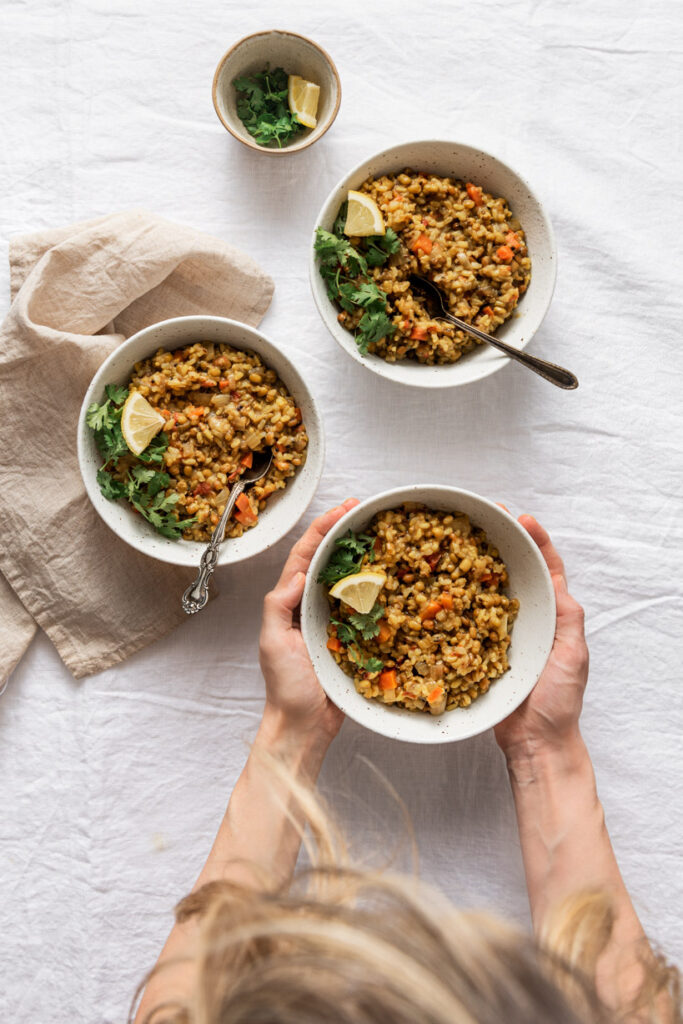
Ingredients You'll Need
How To Make Easy Kitchari
Kitchari is a one-pot dish but there are two key steps before we start cooking; first, soaking the beans and rice to speed up the cooking time and aid in digestion and second, toasting the whole seeds. This adds depth of flavor and helps build this beautiful dish into a wholesome meal.
Recipe Steps:
1. Soak the beans and rice overnight.
2. Toast the whole spices until fragrant.
3. Add veggies and sauté until softened.
4. Add remaining spices, beans, and rice.
5. Add broth and simmer until everything is cooked.
6. Serve as is or with optional garnishes.
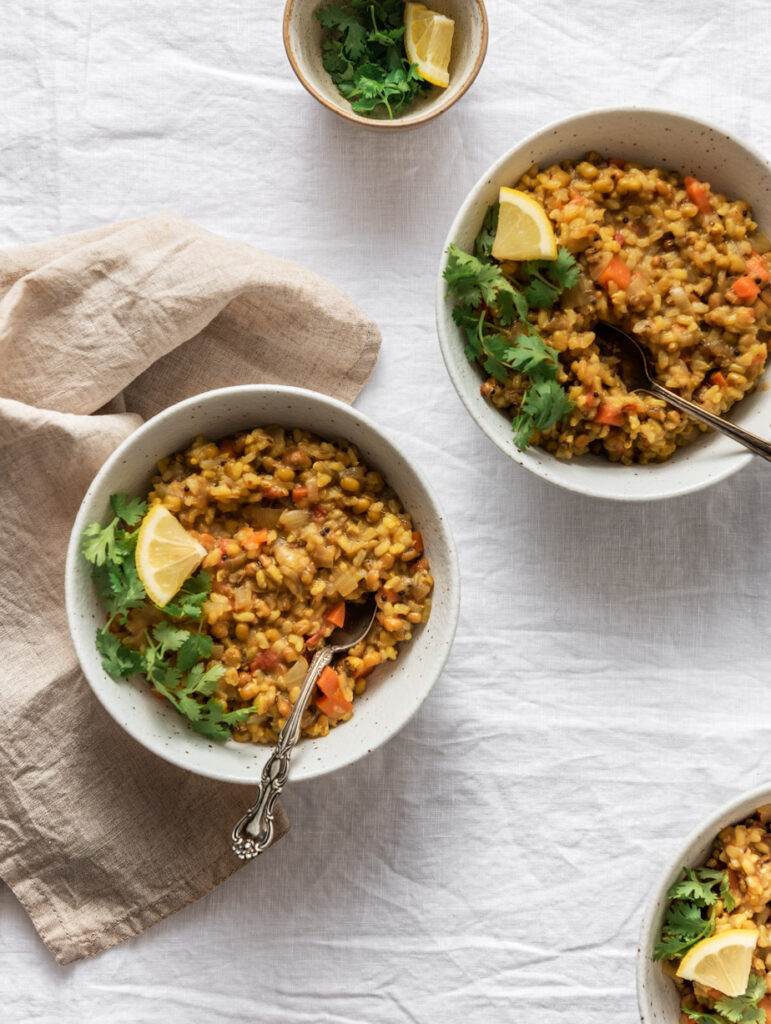
Mung Beans 101
Mung beans are small, green beans that are native to Asia. They cook quickly and are used in sweet and savory dishes.
Mung beans, also call moong beans, are quick cooking and extremely nutritious.
Mung beans are particularly rich in protein, fibre, and non-heme iron.
In this kitchari, we’re using dried mung beans and cooking them from scratch.
In Taiwan, mung beans are easy to find and widely available. If you can’t find mung beans in your local grocery store (check the organic and health food aisles), try a health food store, Indian grocery store, bulk food store, or online.
Store mung beans in a sealed container in a cool, dry place.
Cook them and use them instead of adzuki beans in this easy Adzuki Bean Hummus.
Cook and add to salads, soups, or stews.
Cook and season with tamari or soy sauce and rice vinegar and serve with steamed veggies and cooked whole grains. A simple dish I love!
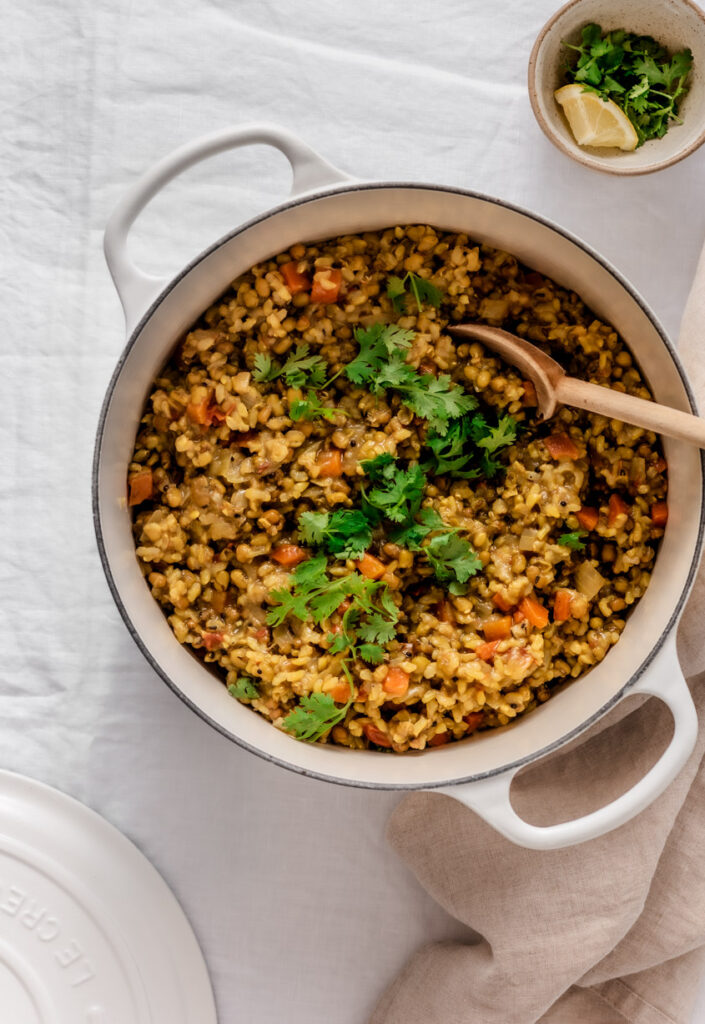
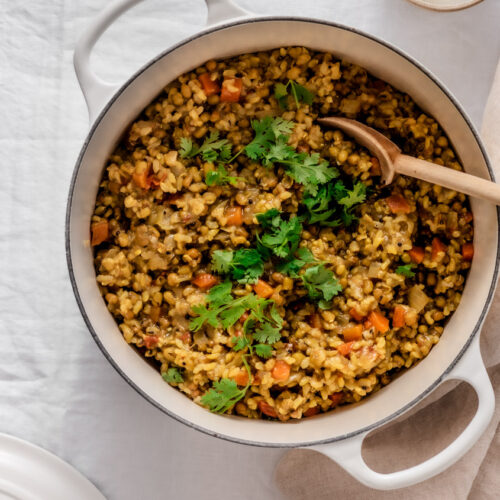

Sign up and receive the latest recipes
The statements and opinions expressed on RiseShineCook.ca are not a substitute for medical or professional advice. Always seek the advice of a qualified healthcare provider with any questions or concerns you may have regarding a medical condition or before starting or altering your dietary plan.
All emails collected on Rise Shine Cook are used for the sole purpose of sharing recipes and updating readers. Emails are not, and will never be, sold or distributed to third parties.
Biophoton
Please start including instant pot instructions for your recipes. Thanks!
Ashley Madden
I’ll work on that!
Ashley
Nancy W.
I simply cannot thank you enough for sharing your amazing recipes…! We began a WFPB/vegan/gluten-free/SOS-free lifestyle in October, and although I have really enjoyed researching recipes and figuring out how to adjust for the elements we’re avoiding, discovering your new cookbook was an absolute gift!! Each time I try a new recipe, it becomes my “new favorite”!! I recently found Rise Shine Cook on Pinterest – so since hubby is under the weather, tonight I made both your Easy Miso and Easy Kitchari. (Double-whammy of healing foods!) I am so incredibly grateful to have discovered your cookbook and website – sincere thanks for helping make healthy cooking an absolute joy!!
Ashley Madden
Hi Nancy! Thanks so much for this feedback 🙂 I’m so happy that the book and my recipes are helpful and making life and dinner a little more joyful and healthier! More coming soon!
Take care,
xo
Ashley
Christine
I bought split mung beans instead of whole. Should I change anything in the soaking method or cooking? This looks wonderful, excited to try it. We have your cookbook and have been making almost everything in it! It has all been wonderful.
Ashley Madden
Hey Christine, you don’t need to soak split mung beans. To keep cooking time short, I think I would still soak the rice. So you have the option of soaking the rice with or without the split mung beans. I hope that is helpful?
Thanks for the cookbook love! I’m so glad you’re enjoying it 🙂
Report back on your kitchari!
xo
Ash